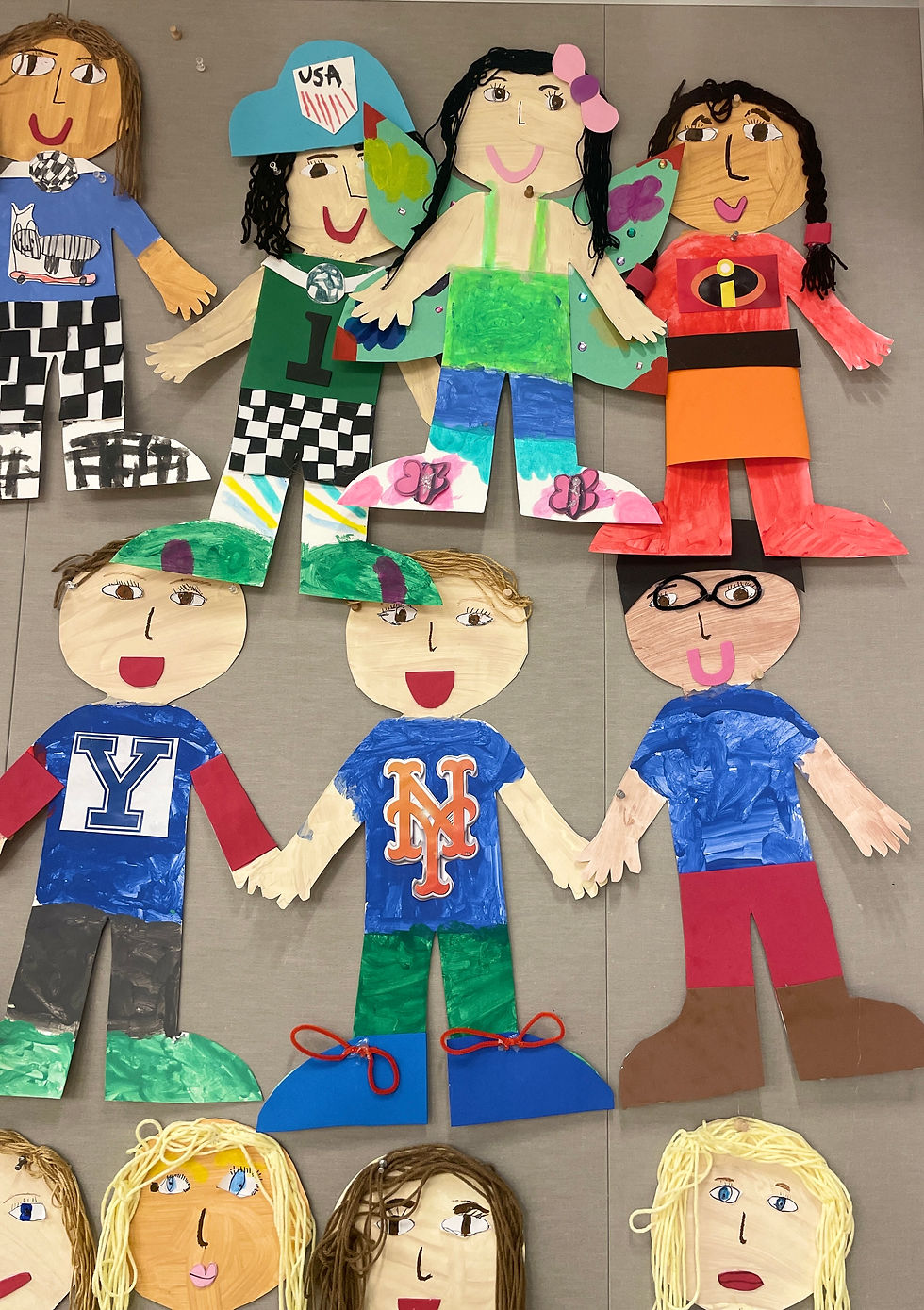The Power of the Long View: Parenting with Tomorrow in Mind
- Kellie Smith

- Jul 21
- 4 min read
By Kellie Smith, M.Ed.| Little Learning Table
Helping parents take a calm, connected approach to the early years, one story at a time.
Introduction: What I’ve Seen as a Teacher
After nearly two decades of teaching—from public schools in Norman, OK and Dallas, TX to elite private schools in New York City—I’ve had the privilege of working with hundreds of families. I’ve seen so many beautiful examples of parenting: parents showing up with intention, love, and patience. But I’ve also witnessed something more subtle and common—moments when even the most well-meaning caregivers unintentionally lose sight of the long-term picture.
This post isn’t about judgment. It’s about reflection. Because parenting is hard. It’s emotional. And it’s easy to get swept up in the urgency of the moment and forget to ask: What might this look like five or ten years from now?
Story #1: The Child with Four Bedrooms and a Private Jet
One year while teaching kindergarten in New York City, I had a student whose parents were recently divorced. They loved their child deeply. But a quiet competition seemed to emerge: one parent would take them on a trip, then the other would follow. Before long, this child was missing a significant amount of time from school.
At first, it seemed like a short-term adjustment. But then I began noticing something else: this child started asking to use the bathroom more frequently—especially during free-choice and recess. These are key social times in the day when children build relationships and practice important interpersonal skills.
"The bathroom had become a way to escape—not just from the classroom, but from social connection."
When I met with the parents to share my concerns, I emphasized that the absences weren’t just impacting academics—they were affecting their child’s social development. At first, they didn’t seem overly concerned. But as I described the behavior I was seeing, they began to understand the deeper issue.
They asked if we could talk about divorce in class, as their child often brought it up at home. I offered to read a book about children living in two homes and follow it with a class discussion.
The next day, I read the book aloud. When we got to a page about having “two bedrooms and two front doors,” the child raised their hand. I was expecting a moment of emotional connection. Instead, they proudly shared:
“I have four homes, four bedrooms, and a private jet.”
It caught me off guard. The story was meant to offer emotional safety—but what emerged was a material comparison. This moment was telling. Their way of connecting was shaped by the world in which they lived.
While the parents appreciated the gesture, they ultimately continued the travel pattern. And I continued to worry. Would this child grow up feeling grounded? Or would the pattern of avoidance and disconnection deepen?
Story #2: The Homework That Was ‘Too Easy’
Another memory that stands out came from a different family—this time involving homework. One afternoon, a parent approached me at dismissal, in front of their child and other families, and questioned why the homework I had sent home was “too easy.”
I gently explained that we had done a similar activity in a small group that week, and their child had needed support, so I had chosen something accessible to build confidence. The parent quickly replied that she would record a video of her child doing the activity to prove it was too simple.
I told her I’d love to see it—perhaps her child felt more confident at home, and I was curious to learn more. The next day, she said the video file was too large to send.
“This was one of many interactions that led me to believe honesty wasn’t always being modeled clearly at home.”
At one point, her child confided in me: “I never lie at school—only at home.”
Throughout the year, that child struggled to navigate friendships and conflicts honestly. And while it would have been easy to feel frustrated, I saw it for what it was: a reflection of what they had seen modeled.
I often wonder what their adolescent years will look like. When the stakes are higher, will this child feel comfortable being honest with the adults in their life?
Zooming Out: Parenting with the Long View
Both of these children came from loving homes. Their parents weren’t trying to cause harm—they were trying to do what felt right in the moment. But parenting in the “now” can sometimes obscure the bigger picture.
“Children watch everything. And what they see in their earliest years shapes what they believe about themselves, others, and the world.”
When we step back and reflect—not just on what we’re doing, but why—we give ourselves space to parent more intentionally, and that shift, even if it’s small, can make all the difference.
What I Hope Every Parent Knows
Whether your child is navigating a divorce, a complex social dynamic, or simply growing up in a fast-paced world, their need for consistency, connection, and honesty doesn’t go away.
Your child needs routines, even if your life feels unpredictable.
Your child needs your truth, even when it’s hard.
Your child needs you to model the values you hope they’ll carry with them—because they’re watching, even when it doesn’t seem like it.
And if you're not sure how to begin or feel like you've missed the mark before, you're not alone. The good news? It's never too late to take a step back and adopt a broader perspective.
A Gentle Invitation
If this post resonated with you, I invite you to explore more of my work here at Little Learning Table. My goal is to help families navigate the early years with calm, clarity, and connection. Whether you’re looking for tools to support social-emotional development, routines that work, or ways to bring more mindfulness into your home, I’m here for you.
✨ Let’s stay connected! Subscribe to the newsletter or check out my free Kindergarten Readiness Checklist to support your child’s growth with confidence.
You’re doing more right than you think. Keep going—and keep zooming out.
With warmth,
Kellie






Comments